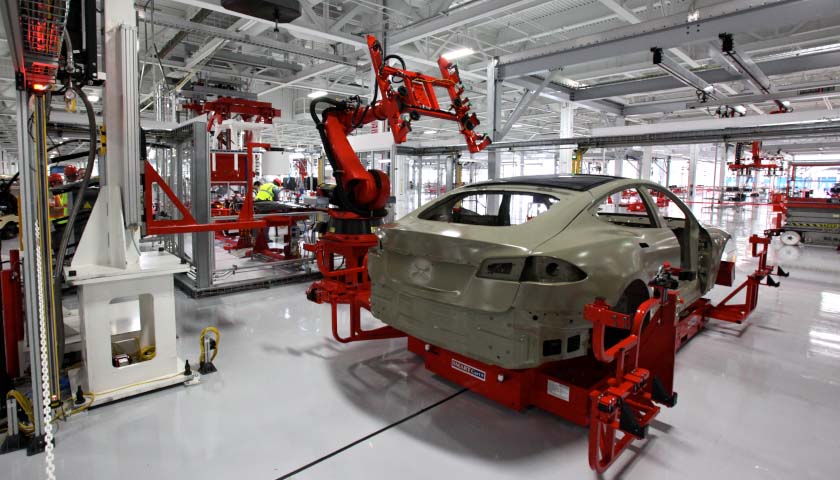by Scott McClallen
Despite Gov. Gretchen Whitmer’s claim that Michigan is the future of electric vehicles (EVs), Ford Motor Company and battery maker SK Innovation announced plans to build three new plants in Kentucky and Tennessee.
The new plants, which will host production of electric vehicles and advanced lithium-ion batteries by 2025, will cost roughly $11.4 billion to build and create a projected 11,000 jobs.
The Stanton, Tennessee location is projected to employ 6,000, and the Glendale, Kentucky site is projected to employ 5,000.
Ford CEO Jim Farley told The Wall Street Journal the new locations required a fresh site to avoid cleanup and renovation. Deciding factors included the region’s proximity to other plants and lower energy costs because battery plants use much more energy than auto-assembly plants.
Farley told The Detroit News that one battery plant uses five times the electricity of an assembly plant.
Jason Hayes, director of environmental policy at the Mackinac Center for Public Policy, tweeted that although it was a complex decision, energy prices played a “key factor.”
“@Ford is building 3 battery factories in TN & KY. **Not MI.** Why? MI avg retail electricity rates – 11.6 cents/kWh. TN – 9.7 & KY 8.6. TN’s #1 source of electricity? Nukes. KY’s #1 source? Coal. What is MI shutting down? Nukes and coal.”
Many factors can influence a state’s electricity prices, including the energy source.
The U.S. Energy Information Administration (EIA) shows the July average industrial price of electricity per kilowatt-hour in Michigan was 8 cents compared with the national average of 7.53 cents. But Tennessee’s was 5.85 cents while Kentucky’s cost was 6.06 cents.
Consumers Energy is planning to stop using coal as an electricity energy source by 2025 and instead use 90% clean energy resources by 2040 and provide nearly 8,000 megawatts of solar energy by 2040. DTE and Consumers are planning to phase out nuclear energy as well.
Tennessee’s two nuclear power plants provided 47% of in-state electricity in 2020. The EIA says natural gas accounted for 20% of the state’s net generation while coal’s share was 18% and hydroelectric power contributed 13%.
In Kentucky in 2020, the EIA says about 69% of Kentucky’s electricity net generation was coal-fired, the fourth-largest share of any state after West Virginia, Wyoming, and Missouri.
Ford spokeswoman Jess Enoch told The Center Square that the Tennessee site stood out as a “perfect choice” of Blue Oval City after a rigorous site selection. Tennessee’s business environment, government incentives, workforce, and availability of renewable energy all made the state a “great fit.”
“The site size affords us the space to integrate the ecosystem into one site which will help drive operational and logistical cost savings,” Enoch said.
Enoch cited numerous factors influencing picking Kentucky for its two battery plants, including the business environment, government incentives, the state’s central location in the U.S. automotive corridor, an existing supplier base in proximity, and among the nation’s lowest-cost industrial electricity.
Ford expects 40% to 50% of its global vehicle volume to be fully electric by 2030.
The announcement follows as Michigan tries to maintain its heavyweight status in the future of transportation and prepare for EVs. So far, most Michiganders drive gas vehicles. As of Nov. 2020, Michigan ranked 14th-to-last in the nation for the number of EV chargers per 100,000 people and most residents don’t drive EVs.
The Secretary of State’s office counts 5.8 million gas vehicles, and 13,545 EVs, and 105,651 hybrid vehicles registered in the state.
– – –
Scott McClallen is a staff writer covering Michigan and Minnesota for The Center Square. A graduate of Hillsdale College, his work has appeared on Forbes.com and FEE.org. Previously, he worked as a financial analyst at Pepsi.
Photo “Electric Vehicle Factory” by Steve Jurvetson. CC BY 2.0.








